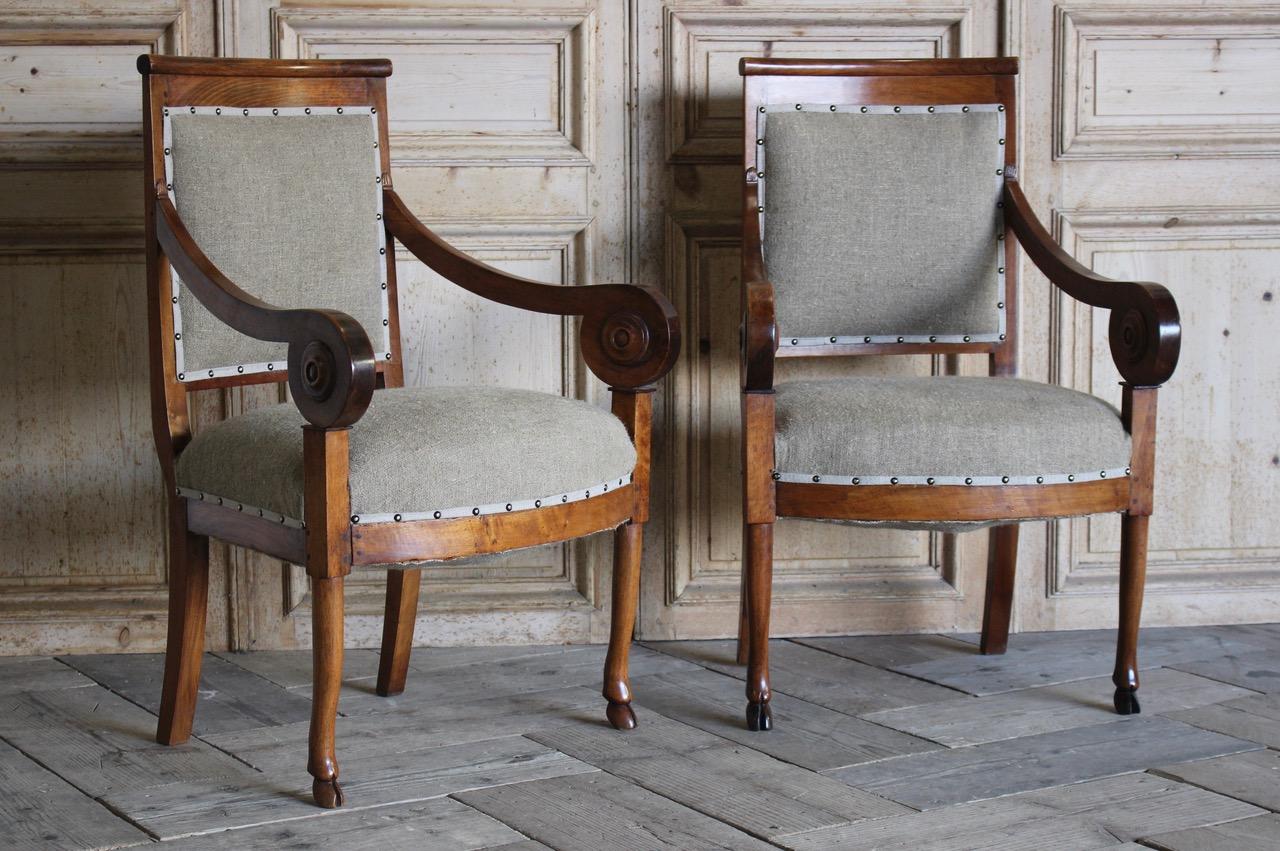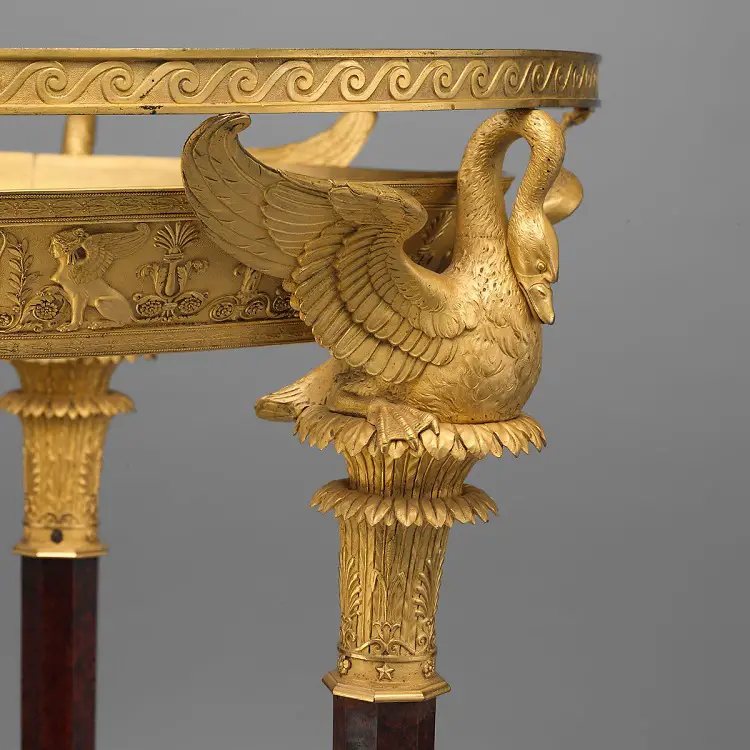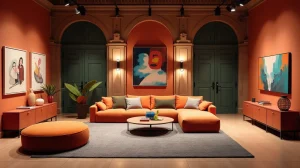The Empire style is directly linked to Napoleon Bonaparte - Napoleon I - and the period when he was emperor of the First French Empire (1804-1814). Empire means empire in French, which is why we sometimes refer to it as the Imperial style. It was created to glorify the greatness of France and its emperor and was imposed by the totalitarian rulers of the time with the help of protocols and regulations that were aimed at the productions of art. Roman, Greek and Egyptian influences strongly dominated the style's creations. Thanks to Napoleon's military campaigns the style spread throughout Europe, coming into contact with and influencing other styles. Specific elements of the European Regency and Biedermeierand the US Federal, are recognized by experts.

The emergence and characteristics of the Empire style
The Empire style is considered the second stage of Neoclassicism. It replaces the Directoire style, minimalist and austere, with one that exudes ostentatious wealth and power. Although it was Napoleon who imposed it, parents his are considered Charles Percier and Pierre Fontaine, French architects who studied in Rome and were strongly influenced by the masterpieces of the Roman Empire. They were also creators of furniture in this style, one of the beneficiaries of furniture designed by them being Napoleon himself.
The style combines symbols of ancient Rome with those of ancient Egypt and elements of Greek architecture. They are complemented by the monogram of the emperor, an N in a laurel wreath, his emblem - the bee, swords, representations of military trophies and coats of arms. Classical elements such as the acanthus leaf, stylized honeysuckle, animal paws, cornucopia, columns, dolphins, lilies, lilies, eagles and rosettes are complemented by Egyptian influences: sphinxes, winged lions, lotus flowers, caryatids and scarabs.
The forms of the objects and constructions are massive, monumental, the decorations abundant and symmetrical. Symmetry is a main characteristic of the style, and when it is not preserved to the left and right of the object, the decorative element used follows the rules of symmetry. The columns used are Corinthian, the simple and austere style of the Ionic and Doric columns being insufficient. Much use is made of gilded bronze and colors that give an imperial air to the rooms: white, gray, blue, red. Everything is grand, imposing and richly ornamented.
Empire style in furniture
Empire furniture has an imposing and massive character, designed to impress. The pieces are large in size, with symmetrical geometric shapes, flat surfaces and decorative elements that make the furniture look imposing and glorious. The look is rigid, and this also impacts on usability, making the pieces uncomfortable. The chairs have solid legs finished in animal paws and straight, upholstered backs. The arms look like a woman's face, sphinxes or winged lions. The tables have round tops, sometimes covered with marble, with three legs in the shape of caryatids, swans or winged lions resting on triangular bases. Sometimes the table has a central leg, like a pedestal, finished with three lion paws. Toilet tables have caryatid columns framing an oval mirror and a white marble top.
Initially it was used for the construction of pieces of furniture made of precious mahon, mahogany and wagons. The military campaigns against Great Britain led to a blockade of exotic timber, with sources limited to the French colonies. Local timber began to be used - nucmaple, ulm, fag - The furniture was embellished with gilded bronze and silver decorations. Exotic species were mostly used to make small objects or veneer.
Another characteristic of the style is the presence of massive, imposing, abundantly decorated decorative objects on table tops or other pieces of furniture or fireplace mantels. Statue clocks, candlesticks in the shape of caryatids, ceramics decorated with paintings reminiscent of Rome or ancient Greece are just some of them.

Influences on other styles
The style's heyday was during Napoleon's reign. With his demise, the style lost its influence but was revived in the late 19th and early 20th centuries. In 1980 there was again a revival of the style, but it was short-lived.
Italy was one of the countries that enthusiastically embraced the style, especially as the Roman influences were obvious. Here the style's influence was very strong and lasted until near the end of the century, with some experts even calling it the Italian Empire. Through General Bernadotte - the future King Karl Johan - the style also reached Sweden, where it was named after the man who brought it.
The spread in Europe led to the influence of local styles. In England it borrowed elements from the Regency style, and in Germany it influenced the Biedermeier style, which took the sturdiness and presence but dropped the opulence and grandeur. In Russia, the defeat of Napoleon led to a takeover of the style as a symbol of defeat. The style reached the United States and strongly influenced the Federal style.




































You have a gift for explaining things in a way that's easy to understand. Thanks for another great post!